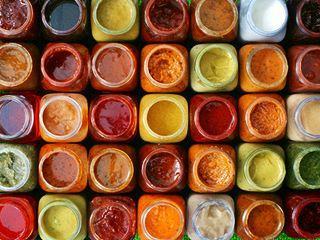
Marinating 101: The Ultimate Beginner’s Guide
The simplest and most cost-effective way to infuse meats with incredible flavor is to treat them like essential sponges – in other words, marinate them and allow the juices to redefine the texture, consistency, and most importantly, the palate profile before you fry, bake, or grill.
However, it’s important to note that creating a delectable marinade is much easier said than done, especially when taking into account the vast disparity in terms of how different meats react to various immersions, dressings, and flavorings.
Fortunately, you can use this brief exposé as an introductory guide to understanding the ins and outs of marinating meats in this day and age, the perfect reference guide for barbeque novices and protein greenhorns.
The Do’s and Don’ts
Before we dive into any specifics, it’s important to set some ground rules:
- DO plan ahead; begin your marinating exercise in the morning before work, or better yet, the night before.
- DON’T reuse your leftover dressings and marinades to coat other foods.
- DO place your marinate mixture in the refrigerator as opposed to room temperature.
- DON’T marinate in metallic containers, such as aluminum foil for instance, because you run the risk of inciting a dangerous chemical reaction within the food.
- DO use resealable plastic baggies, for they allow you to uniformly distribute the sauce across every bit of meat.
- DON’T use your marinade as a sauce, unless you boil it first to eradicate foodborne pathogens.
- DO use a meat thermometer every time as opposed to relying color or purported cook time.
- DON’T bread your meats until after the marinade process is complete, for the marinade will help adhere the breading to your protein.
General Rules of Thumb
Now that we’ve identified some axiomatic do’s and don’ts, we can comfortably move onto some of the more salient details and guidelines:
- Base Formula: 1 part acid + 2 parts fat + seasonings/extras
- Examples of Acid: Standard vinegar, apple cider vinegar, lemon juice, wine, or yogurt.
- Examples of Fat: Vegetable oil, buttermilk, olive oil, coconut oil, or rendered animal fat.
- Examples of Seasonings/Extras: Orange peel, cumin, mustard, ginger, paprika, salt, pepper, etc.
- How Much to Use: For every one-pound of meat, apply ½ cup of marinade.
- Minimum Marinade Times: Shellfish: 15 minutes; fish: 30 minutes; chicken: 3-12 hours; pork: 3-12 hours; lamb: 3-24 hours; beef: 3-24 hours.
Some Fantastic Marinade Recipes
Now that you have the basic fundamentals down pat, feel free to try your hand at some of the following recipes:
- Chicken Marinade: 1 part vinegar + 2 parts vegetable oil + splash of soy sauce + a dash of mustard
- Beef Marinade: 1 part lemon juice + 2 parts olive oil + splash of Worcestershire sauce, soy sauce, and hot pepper sauce
- Fish Marinade: 1 part rice vinegar (or raw lemon juice) + 2 parts sesame oil + sprinkle of sesame seeds + brown sugar to taste
- Lamb Marinade: 1 part fresh lemon juice + 2 parts extra-virgin olive oil + a sprinkle of dried oregano leaves + salt and pepper to taste

